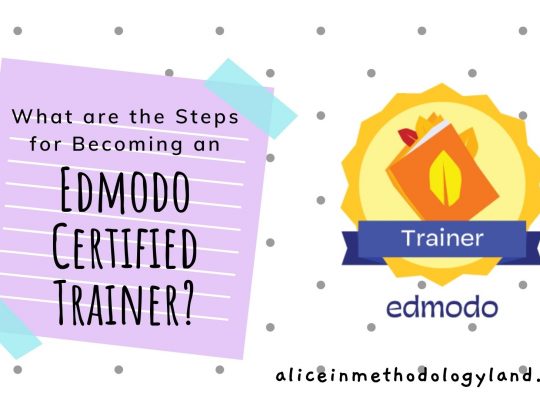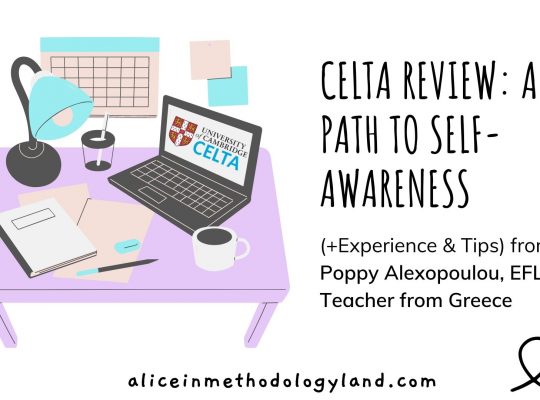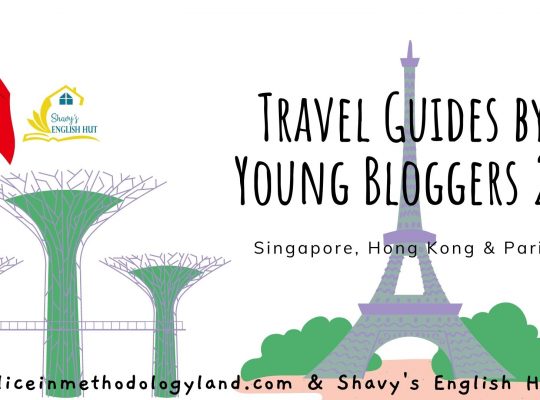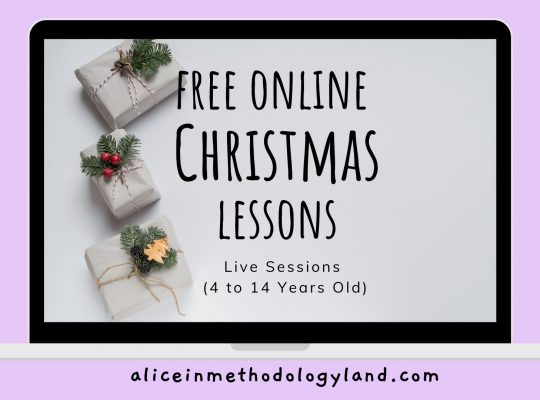Hello, dear educators! We are thrilled to present our fourth workshop reflection and a review of the educational STEAM subscription in our “Around the World with Alice & Womple” project. We extend our gratitude to the local Cultural Center Barka or KC Barka for generously providing us with the venue for our program. Womple Studios graciously donated their educational boxes and offered their support to our program. In this article, we will delve into the objectives of our program and talk about the activities from the fourth workshop. Let’s dive right into it!

About the Womple STEAM educational box
Womple is an extraordinary educational box that takes children on a global journey to explore diverse countries and cultures. Each box contains materials for two country-themed crafts, which encompass a range of activities from art to engineering and building. What we particularly appreciate is the inclusion of stickers, informative posters, and a chapter book that narrates Womple’s adventures across various countries. The crafts come with detailed instruction posters, providing us with an opportunity to practice English by following and deciphering instructions.
There’s something magical about storytelling, isn’t there? Compelling stories transport us to new and exciting places—diving into underwater caves, venturing through dense and humid jungles, and scaling the summits of perilous volcanoes. Stories also help children grasp complex subjects and understand different perspectives by immersing them in fresh experiences and allowing them to step into others’ shoes. They shed light on new concepts, broaden children’s horizons, and foster empathy.
Following each country, we are accompanied by Womple, our remarkable CTO (Chief Travel Officer). Womple is our beloved plush companion present in every workshop, guiding us through the remarkable cultures, countries, and languages we encounter.

Coddiwomple (v.) — To travel in a purposeful manner towards an unknown destination.
Our fifth Womple box – The Philipines
The Philipines had an amazing box! As always, we were treated with a chapter storybook, complete supplies for 2 crafts, a big map of the Philippines with a lot of amazing information, stickers, postcards, a keychain, and hours of fun!

Workshop methods and program aims – in case this is the first Womple box article you are reading (we add the same methods to each post)
The program focuses on learning English through literature, travel & science. Each workshop has a dedicated book from a country we visit, where we follow our main character Womple on his travels. The science focus is present through exploring different phenomena from different countries (from the animal to the human world) and engineering (building various structures from cardboard and wood.)
The overall aims of the program include the following:
- Vocabulary acquisition through play,
- Developing awareness about other countries and cultures,
- STEAM – using science, technology, engineering, art, and mathematics (primary school level),
- 21st-century skills – communication, collaboration, creativity, critical thinking,
- Dramatic activities – gross motor skills (body movements) and gesticulation (facial expressions),
- Crafting – workshops with the book theme and fine motor skills development (using fingers).
The program has around ten children, and the spaces are limited. The present children need to be able to write and read the Latin alphabet. To participate in the program, the children need to have completed at least one year of language learning in school since the program is not for absolute beginners. The program is open to children from the 2nd, 3rd, 4th, and 5th grades. The group is permanently formed, and the same children attend from the beginning to the end of the program.
The grand opening
The kids were very intrigued by the box’s contents because I pulled out a lot of additional wool, they saw a wooden material inside, and they couldn’t guess what we were going to do! Again, like before, I decided to do a country guessing game by listening to Filipino music and trying to guess the language. The kids recognized some Spanish words, and that was a great starting point for a more serious discussion that came later. They found the Philippines on our big world map, and we were ready to start our research then!

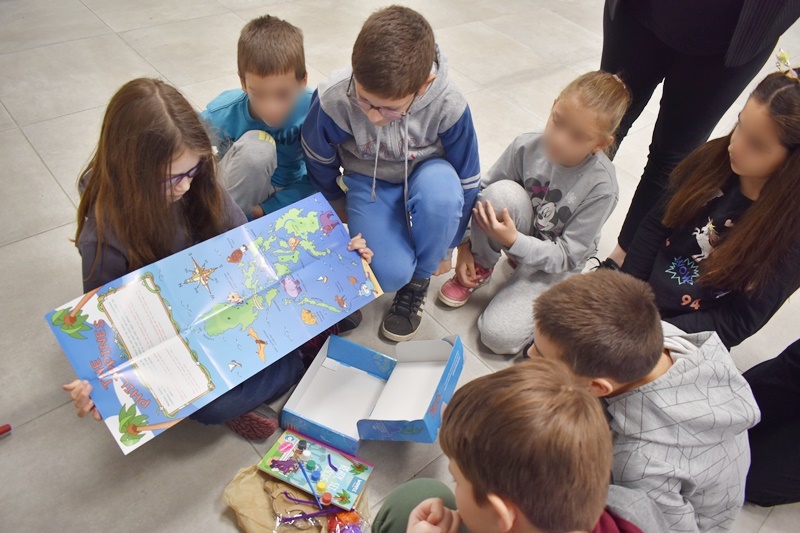
The big questions and map exploration
In workshop number 5, we traveled to the Philippines! We explored the map from top to bottom because the children were really intrigued by it and we saw a lot of endemic animals. We discussed how animals evolve slower if they are separated from the mainland as the ecosystems remain mostly uninterrupted.
We also learned about landforms, what islands are, and why we need a compass if we live on an island belt or archipelago. Most of the children haven’t visited an island before so we discussed how life is different on islands.

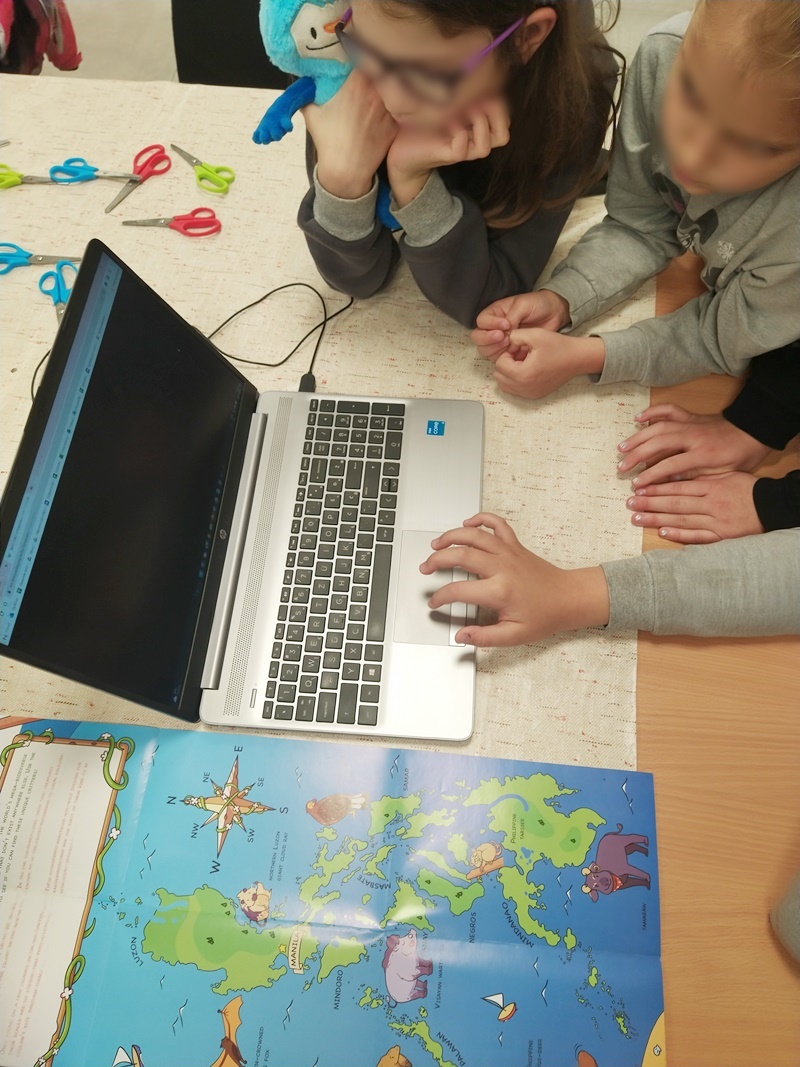
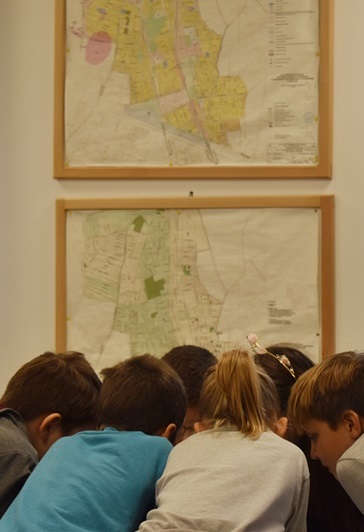
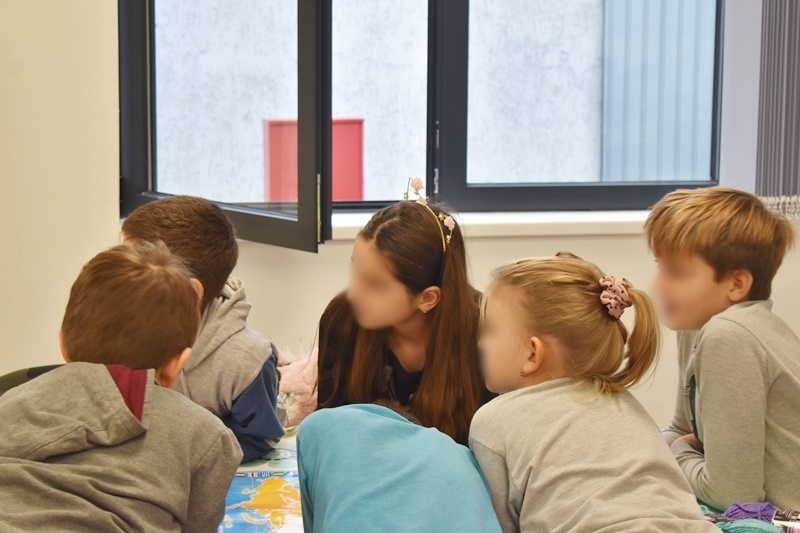
An archipelago is an area that contains a chain or group of islands scattered in lakes, rivers, or the ocean.
We also guessed the size of each animal and translated the imperial measurements into the metric system. The kids found it very funny and interesting how the imperial system works, and they were really focused on translating the measurements to see the actual sizes of the Philipines endemic animals. There was a lot of content for them to digest and we spent a lot of time discussing it.
The Womple Storybook
The boys especially enjoyed this one and were eager to list and name all of the places Womple went to and the animals he went on the way. The book is a chapter book, and it is way beyond their reading level as second language learners, but it has illustrations, and as a teacher, I really appreciate it when chapter books have illustrations because it fills the information hole very nicely and we were able to guess what happened to Womple and follow him on his journey.
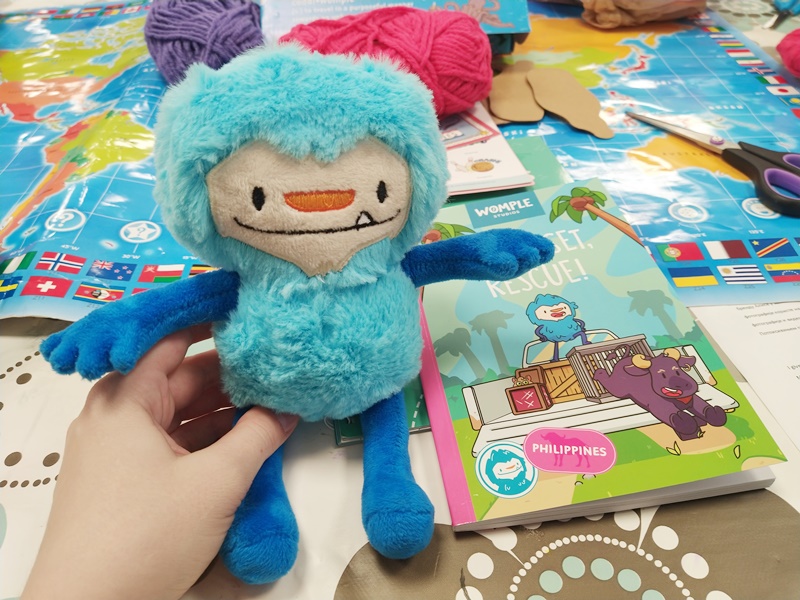
1st crafting activity

Our practical task was to build a Tamaraw from wool. We learned a lot about the Tamaraw by exploring on Google, and it really confused the kids as to why it lives only in the Philipines. This was their first time exploring an endangered animal so closely.
The tamaraw or Mindoro dwarf buffalo is a small hoofed mammal belonging to the family Bovidae. It is endemic to the island of Mindoro in the Philippines, and is the only endemic Philippine bovine.
Tamaraw made like this was also a traditional toy for kids in the Philippines, so that was another important aspect the children were really curious about – we tried to remember traditional toys in Serbia as well. The craft engaged their fine motor skills by helping them roll, entwine, cut, glue, and plan how to cover the tiny visible cardboard section while also trying to keep the shape of the Tamaraw.
Everyone wanted to make their Tamaraw as best as they could, so we had issues with patience, and we focused on talking about it and trying to wait and make sure there was wool for everyone. It ended nicely, so we had a nice opportunity for natural social-emotional learning.

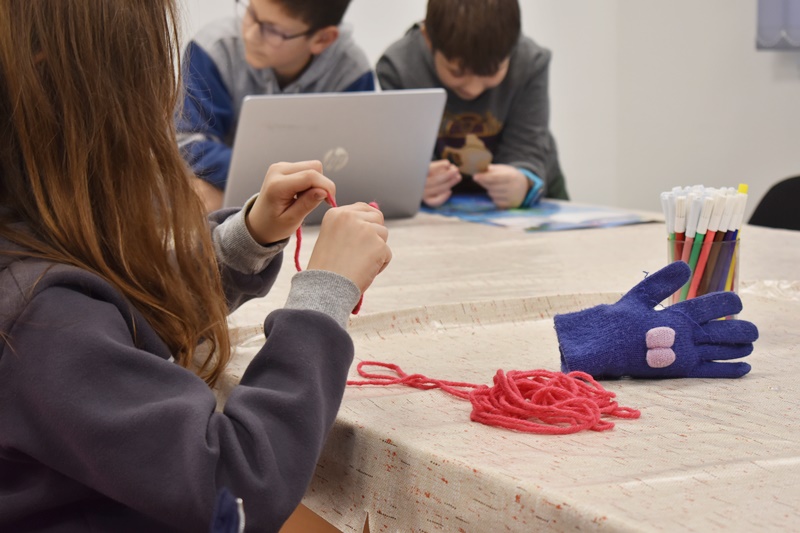
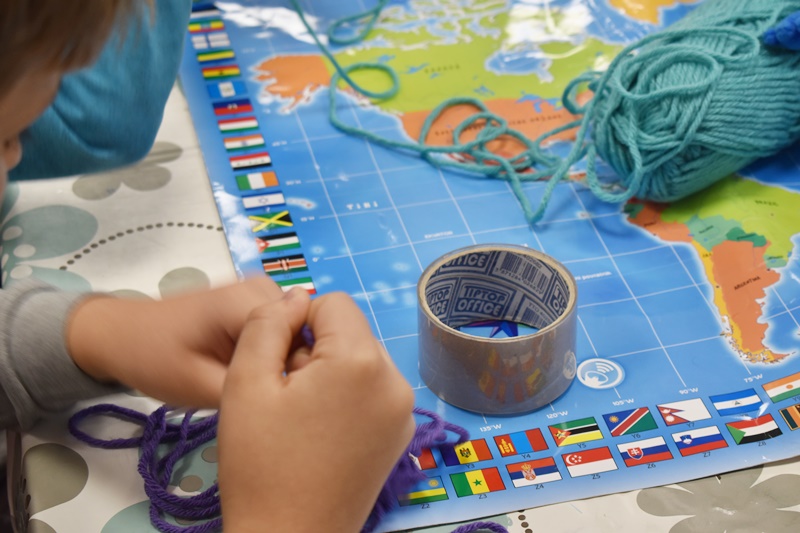
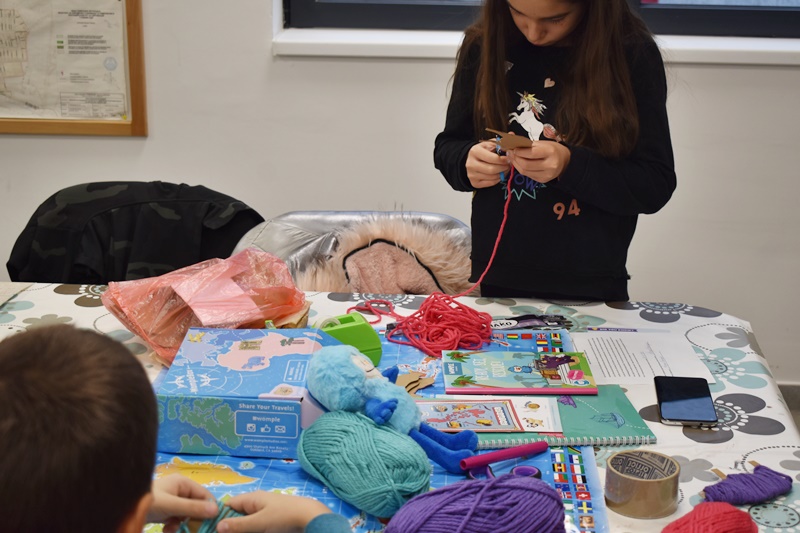


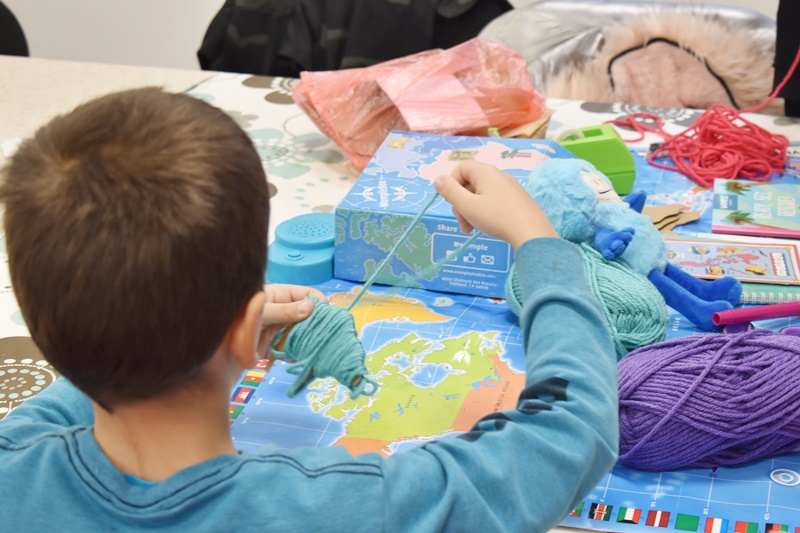
2nd crafting activity
The second crafting activity was done by one student, since we had resources for 1 craft we randomly selected a student to complete it. The craft included creating a Jeepney, a public transport vehicle that exists only in the Philippines. It does not have a very happy origin, but the Filipinos have managed to turn the situation around and create a national symbol of it by adding their traditional patterns and art onto the public transport.
The jeepney started appearing on the streets of Manila in the 1950s after World War II ruined the country’s transportation infrastructure. After the War, Americans left a surplus of jeeps and military vehicles behind.
The children absolutely loved it and wanted to ride in a Jeepney!
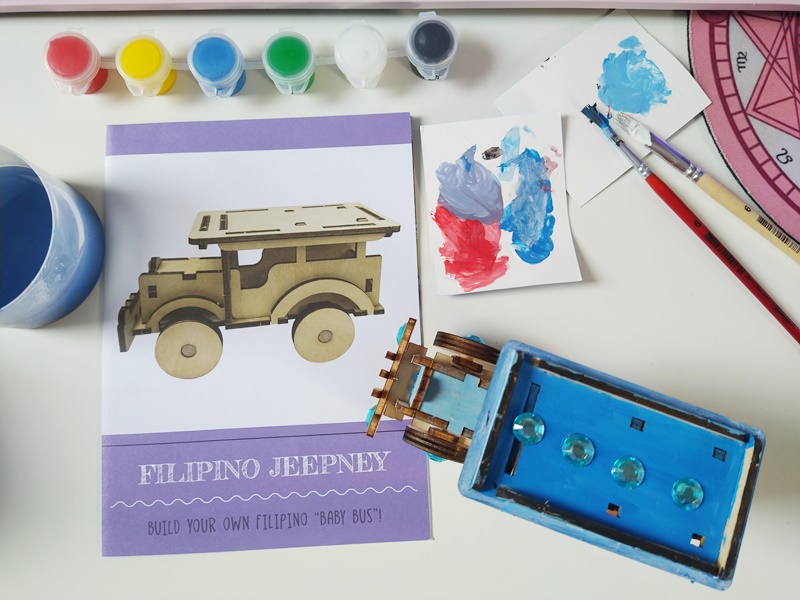


Some problems and learning opportunities
In the last 20 minutes, we used exclusively English, which motivated the children to talk among themselves and ask other children for translation, which is a great opportunity for peer-language learning.
Things that could be further discussed at home
We had multiple moments of critical thinking situations where the children asked various interesting and complex questions. We listened to Filipino music at the beginning of the class and noticed that languages in the Philippines, such as Tagalog, have a lot of Spanish loanwords and dishes because they were a colony of Spain for over 300 years.
We didn’t mention the word “colony” or “colonization” because it’s just too complicated for kids and in general it can create negative feelings towards certain countries that have colonized many countries, so I advised parents to discuss that at home.
The same topic came up when another child asked if we were going to visit the UK or the USA, to which I told them we wouldn’t because we wanted to see countries that normally don’t get enough attention.
The kids also asked if Serbia was ever colonized and they were very satisfied when I confirmed that we weren’t. Someone added that we were conquered by the Turks, so we had a conversation about it. We simply have to admit that the culture of some countries is assimilated, i.e., a lot of things in language, culture, and everyday life were erased and reshaped according to the idea of whoever colonized the country. The topic is difficult for children because they cannot imagine it, why would someone change other people’s customs and language by force?
Dragi roditelji,
U nedelju smo istraživali Filipine. Istražili smo mapu od početka do kraja i videli smo mnogo endemičnih životinja, tako da ih možete pitati da li se sećaju neke od životinja sa mape i kako životinje sporije evoluiraju ako su odvojene od kopna. Naučili smo šta su ostrva, zašto nam je potreban kompas ako živimo na pojasu ostvra, sve strane sveta. Istraživali smo knjigu, tj. našu priču i videli gde je sve naš junak Womple išao i koje je životinje video sa mape.
Gledali smo veličinu svake životinje i prevodili mernu jedinicu sa imperijalističkog na metrički sistem, i tu smo pokušali da izgovaramo velike brojeve.
Praktični zadatak nam je bio da napravimo Tamaraw-a od vune, životinju sa Filipina koja je sada kritično ugrožena i živi samo na filipinima. To takođe predstavlja i tradicionalnu igračku za decu i svima se jako svidela tako da smo vežbali prste ovaj put i svi su baš bili zainteresovani da naprave svoju igračku.
Bilo je toliko neobičnih životinja da nismo uspeli da naučimo ništa drugo o Filipinima. 😂
Poslednjih 20 minuta smo radili isključivo na engleskom i od sada ćemo komunicirati 100% na engleskom. Deca su pitala drugu decu za prevod i to ih ujedno i natera prirodno da više sarađuju i slušaju jedni druge kada pričaju.
Prostor za dalji rad kod kuće:
Imali smo razne momente kritičkog razmišljanja gde su deca pitala razna pitanja koja su zanimljiva i kompleksna.
Videli smo da jezici na Filipinima, kao npr. Tagalog ima jako mnogo španskih pozajmljenica i jela jer su bili kolonija Španije preko 300 godina. Nismo pominjali reč ”kolonija” ni ”kolonizacija” jer je prosto previše komplikovano za decu i generalno može stvoriti negativna osećanja prema određenim zemljama koje upravo jesu kolonizovale dosta zemalja, tako da je to prostor za razgovor sa decom koji možete imati kod kuće. Ista tema je bila u pitanju kada je drugo dete pitalo da li ćemo posetiti UK ili USA, gde sam im rekla da nećemo jer želimo da vidimo zemlje koje inače ne dobiju dovoljno pažnje.
Klinci su isto pitali da li smo mi nekada osvojili i bili zadovoljni kada sam potvrdila da nismo, a neko je dodao da smo mi bili osvojeni od strane turaka, tako da smo imali objektivni razgovor o tome, pa pričajte sa njima o tome kod kuće jer prosto moramo da priznamo da je kultura nekih zemalja asimilirana tj. da je dosta toga u jeziku, kulturi i svakodnevnom životu obrisano i preoblikovano po ideji onoga ko je kolonizovao zemlju. :/ Tema je teška za decu jer oni to ne mogu da zamisle, zašto bi neko menjao tuđe običaje i jezik na silu? Tako da smo tu stali i ostalo je na Vama kako ćete im objasniti, pitali su stvarno baš mnogo pitanja o ovome.
Pošto su svi hteli da naprave svog Tamarawa što bolje, imali smo problem sa strpljenjem i deljenjem vunice pa smo naučili i tu reč i dogovorili se da budemo strpljivi dok se odmota vunica za svakoga. 😂 Vežbaćemo strpljenje u budućim radionicama!
Vidimo se naredne nedelje!
Teacher Alice
To conclude
I loved this box! As an educator, it taught me things I wasn’t aware of because I hadn’t seen jeepneys before or learned that there are so many amazing animals in the Philippines. I am especially pleased because the craft was a product that the kids could take home to play with while also experiencing cultural tradition, learning science art, and practicing fine motor skills! I want to especially commend Womple for giving attention and promoting cultures that we don’t normally don’t get to explore and see.
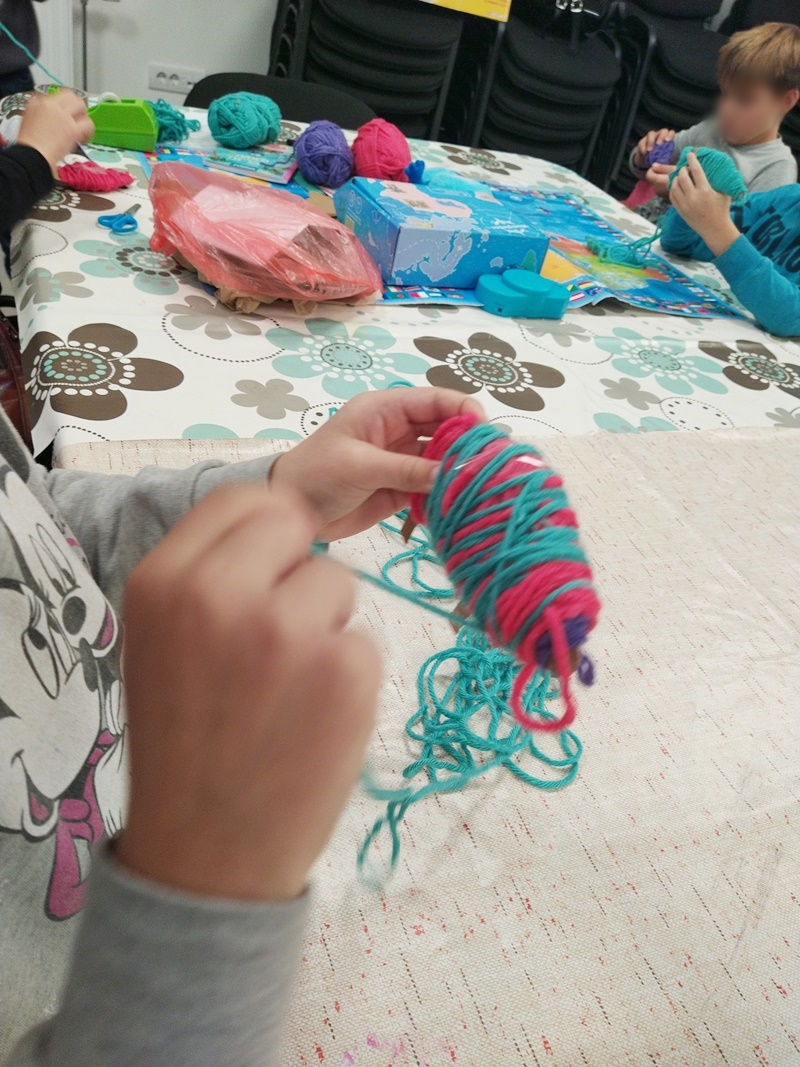
If you are interested in getting your WompleBox and want to use it at home, you can click here or the image below to get 30% off your first box by entering our special code FIRSTMONTH30! We want to thank Womple once more for this gift because the children have been more excited than in any program we’ve done so far!
Check out our previous Womple workshop summaries
- Around the World with Alice & Womple: Workshop reflection 1 – Greece
- Around the World with Alice & Womple: Workshop reflection 2 – Rapa Nui
- Around the World with Alice & Womple: Workshop reflection 3 – France
- Around the World with Alice & Womple: Workshop reflection 4 – Brazil
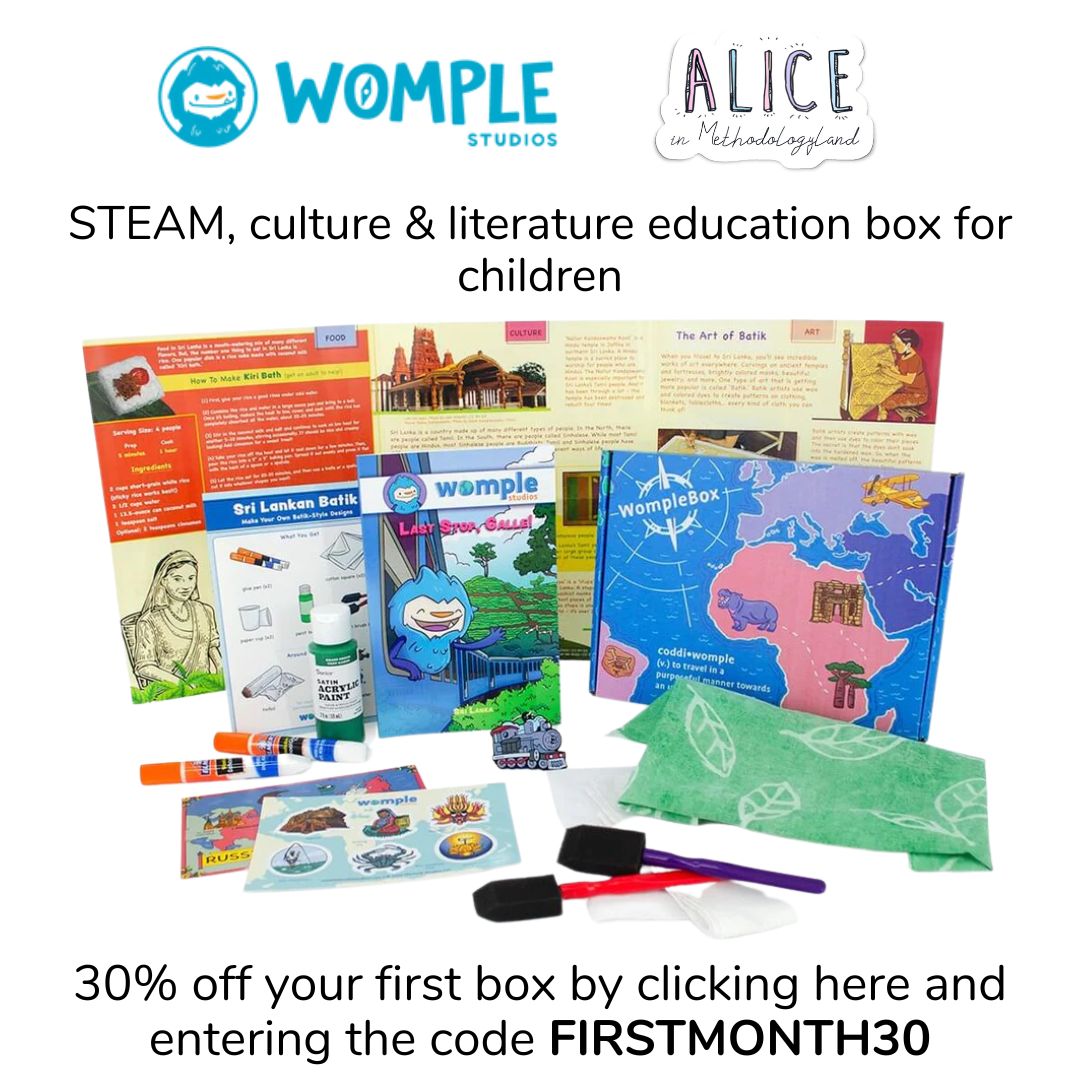
What do you think about our fifth workshop? Do you think world travel and practical activities can help your child improve their English skills? Let us know in the comments or on our Instagram page!

